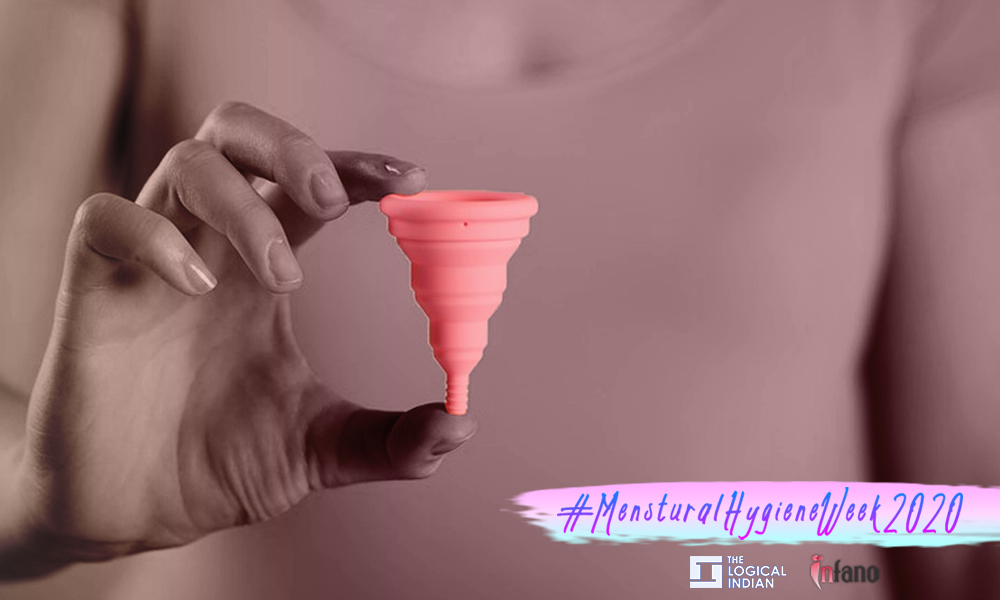
Making Menstruation More Sustainable: Bleed With Dignity And Responsibility
India, 26 May 2020 6:43 AM GMT | Updated 26 May 2020 7:22 AM GMT
Creatives : Abhishek M
" An engineer by profession, Abhishek is the creative producer of the team, graphic designing is his passion and travelling his get away. In more ways than one, he makes the content visually appealing."
Today, disposed sanitary pads and tampons have become a biohazard for the planet. This Menstrual Hygiene Day let's raise awareness about the importance of sustainable menstrual practises and products.
28 May is Menstrual Hygiene Day which aims to break taboos and raise awareness about the importance of good menstrual hygiene management for women and adolescent girls worldwide. It was initiated by the German-based NGO WASH United in 2014. Today, menstruation is a topic slowly making itself into homes and creating awareness about the many taboos surrounding it. Initially, women had been using discarded cloth for absorbing the menstrual blood. This slowly gave way to the sanitary pad revolution. A boon at one time, today sanitary pad has become a biohazard for the planet. Use of non-biodegradable napkins is increasing everyday with rising incomes and changing demographics. We produce several hundred million used sanitary pads a month. Plus sanitary workers who pick up these pads, tend to catch infections from them. So on this occasion let us strive and educate ourselves a bit about how we can contribute in lessening towards sanitary waste.
What can we do to reduce our landfills with sanitary waste?
The answer: Use environmentally biodegradable products which are reusable and contribute minimally to the global landfill in the long run.
The options: Many. Right from biodegradable/organic sanitary napkins which decompose over time, to reusable cloth pads to the menstrual cup. The choices are plenty but the awareness is little.
Let's explore:
1. Organic Sanitary Pads: According to experts, the modern sanitary napkins with odor neutralizers and fragrance use artificial colors, and are 90 per cent plastic, which may cause hormone imbalance, cancer and infertility and take hundreds of years to decompose. But organic and biodegradable sanitary pads can decompose within 6 months. They contain no-added bleach or chemical, and are made with plant-based materials like wood pulp, bamboo or banana fiber and organic cotton, which is ecologically-certified.
2. Cloth Pads or just cloth: These are reusable and a great alternative to disposable sanitary napkins. They are better for your body and the environment provided they are washed and maintained hygienically. They work exactly like a sanitary napkin, except they can be washed and reused for several years. They do not create any disposable waste after each use. It's also a great save monetary wise. There are many readymade cloth pad options available in the market ranging from different brands to sizes and colors. Some have a leak-proof layer with wings at the sides that have snap buttons to keep the cloth pad in place. These can also be made at home with hygeinic discarded cloth. There are many DIY tutorials available online. However care should be taken to make sure all these layers are fully exposed to sunlight while drying.
3. Menstrual Cups: Menstrual cups are made of medical grade silicon that collects the blood when kept inserted inside the vagina. This is the same grade that is used in making nipples for baby feeding bottles hence safe to use. Unlike regular pads, there's no foul smell of the blood, rashes or itchiness and it is much more hygienic than the sanitary napkins. They're reusable, easy to use with a bit of practice, a one time investment and largely chemical free. Menstrual cups can be a revolution for the lower class of Indian women who have no sanitary options while menstruating and can be a revolution. They come in various sizes and lengths to suit different bodies. This costs 1000-4000 rupees in a lifetime as it can last for years without needing disposal or change. Many brands have emerged in the market.
4. Period Panties: Period panties are designed to provide leak-proof comfort all day long. Period panties have extra absorbent layers to prevent the leakages. You can wash and reuse them multiple times. A loop through which pads can also be slipped in helps keep the pad immobilized. For light bleeding, you can bleed directly into them but for heavy bleeding with chances of leakage, these can be teamed up with your regular menstrual product.
Why are breathable menstrual products important for health?
While the pH of blood is around 7.5 (slightly alkaline), the vaginal pH is typically 3.5 to 4.5 (moderately acidic). The normal vaginal pH is ideal for beneficial bacteria and creates a hostile environment for pathogenic bacteria that cause odor and infection. When the pH of the vagina increases, it favors the growth of pathogenic bacteria and yeast.
During menstruation, vaginal pH becomes elevated by menstrual blood, and chances of contracting infections such as bacterial vaginosis becomes high. Therefore, breathable menstrual products which require to be changed frequently, such as cotton cloth, help to keep the pH levels in check, and prevent vaginal infection, says women's health activist Sinu Joseph. On the other hand, menstrual products that contain an impermeable plastic layer such as sanitary napkins, and/or are highly absorbent such as tampons, can increase the chances of vaginal infections by increasing the vaginal pH by retaining blood for long periods of time.
Plenty of brands, tutorials, and information is available on the internet and social media regarding sustainable menstrual products and one can easily choose from the wide options available and also order online. It's time to menstruate responsibly. Let's switch to sustainable methods of menstruation and join the revolution for a better planet.
Also Read: This 'Padman Of Jharkhand' Quit His Job To End The Stigma Around Menstruation
 All section
All section














